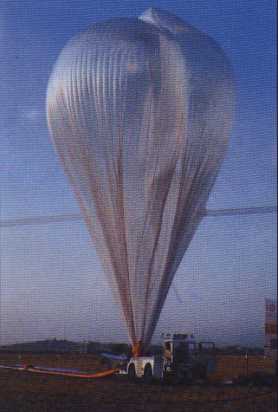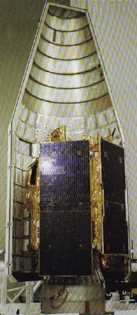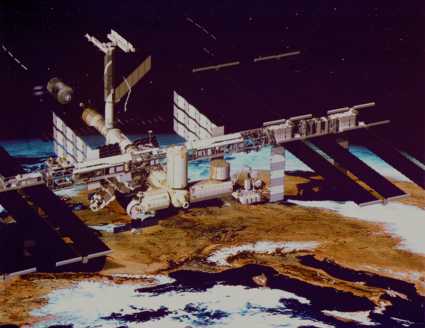
A new impulse for the study of the cosmos is coming from the scientific utilization of space.
By means of active and passive detectors located on stratospheric balloons direct measurements are being made of the composition of cosmic rays up to energies of about 1000 TeV.
On board of satellites like Beppo-SAX (an Italian satellite operated by foreign and Italian Institutions –among which the Universities of Bologna, Ferrara and CNR-ITESRE) one may study the gamma-ray bursts, which come from all directions of the sky. The bursts are probably connected with particular galaxies, which send matter at relativistic velocities in the surrounding space.
The International Space Station, which will orbit around the earth at an altitude of 400 km, is being constructed by a large international collaboration, which includes the Italian (ASI), European (ESA) and American (NASA) space agencies. The Station will allow many studies of astrophysical interest. The Station will house the AMS experiment, performed by a large international collaboration (of which are part the Universities and the INFN Sections of Bologna and Perugia). AMS will search for antimatter and will study the cosmic radiation. Other experiments will study the cosmic background radiation, etc. On the Station the astronauts will assemble large telescopes which will later be deployed in space: they should be able to detect the photons coming from very far sources, which will allow to study the evolution of the universe.

2) The Beppo-SAX satellite, which orbits around the earth at an altitude of 600 km.
3) The International Space Station which will orbit the earth at an altitude of 400 km.; the location of the AMS experiment is indicated (ESA image from ASI).
